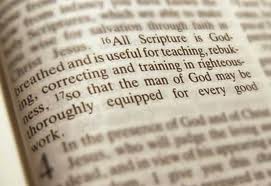Starting with a flawed foundation dooms a building, the Spirit overcomes our ignorance and our traditions, all to His glory, but we should surely be very concerned that we give new believers a solid foundation upon which to develop a heart of wisdom to God’s glory.
One of the areas I have focused upon in my ministry that is vital to the maturity of modern Christians is the trustworthiness of the Scriptures. I am convinced that we must tackle the “tough issues” in the context of the community of faith before people are exposed to the “spin” of the enemies of the faith as they cherry-pick the facts of history and prey upon the unwary and immature.
One of the most often asked questions I encounter has to do with the relationship between the reality of textual variation and the doctrine of inerrancy, or even the general concept of inspiration. And this goes directly to the foundation that must be laid regarding this vital area.
First, we must understand that the doctrine of inspiration speaks to the origination and character of the original writings themselves, their character and authority. Inerrancy speaks to the trustworthiness of the supernatural process of inspiration, both with reference to the individual texts (Malachi’s prophecy, 2 John) as well as the completed canon (matters of pan-canonical consistency, the great themes of Scripture interwoven throughout the Old and New Testaments). While related to the issue of transmission, they are first and foremost theological statements regarding the nature of Scripture itself. They were true when Scripture was written, hence, in their most basic forms, are not related to the transmissional process.
Many new believers, upon reading the high view of Scripture found in the Bible itself, or hearing others speak of its authority and perfection, assume this means that the Bible floated down out of heaven on a cloud, bound together as a single leather-bound volume, replete with gold page edging and thumb indexing. The fact that God chose to reveal Himself in a significantly less “neat” fashion, one that was very much involved in the living out of the life of the people of God, can be disturbing to people. They want the Bible to be an owner’s manual, a never-changing PDF file that is encrypted and locked against all editing. And while I surely believe God has preserved His Word, the means by which He has done so is fully consistent with the manner of the revelation itself. We dare not apply modern standards derived from computer transfer protocols and digital recording algorithms to the ancient context for one simple reason: by doing so we are precluding God’s revelation and activity until the past few generations! What arrogance on our part! We must allow God to reveal Himself as He sees fit, when He sees fit, and we must derive our understanding of His means of safeguarding His revelation from the reality of the historical situation, not our modern hubris. Continue reading


